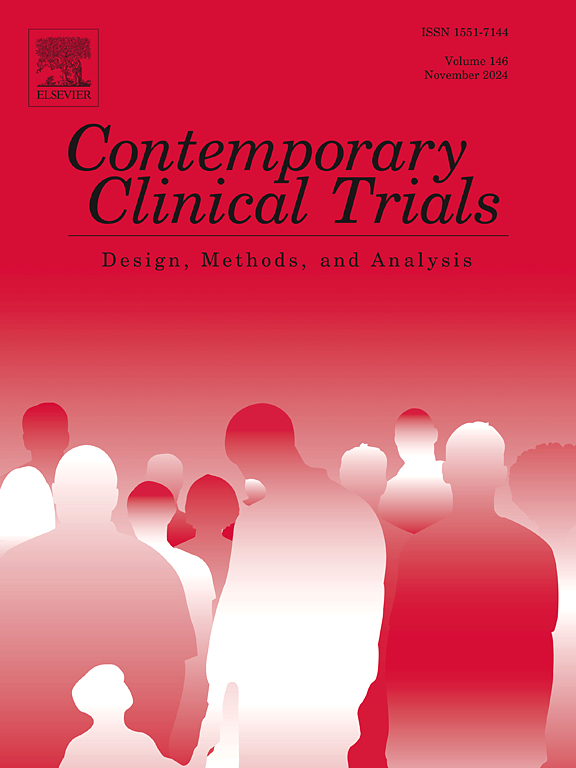对话聊天机器人对戒烟的功效:QuitBot 全面随机对照试验方案。
IF 2
3区 医学
Q3 MEDICINE, RESEARCH & EXPERIMENTAL
引用次数: 0
摘要
在全球范围内,吸烟每年导致 800 多万人过早死亡。要解决这一问题,就必须采取影响大、成本效益高的人群戒烟干预措施。鉴于机器学习和大型语言模型的最新进展,对话聊天机器人提供了一种潜在的解决方案。聊天机器人可以根据用户的需求,通过旨在建立持久社会情感联系的治疗性对话,提供支持性、移情行为、个性化回复和及时建议。尽管聊天机器人大有可为,但人们对其戒烟功效和内在机制知之甚少。我们开发了戒烟机器人 QuitBot,这是一个由两到三分钟对话组成的戒烟程序,对话主题包括戒烟动机、设定戒烟日期、选择戒烟药物、应对诱因、维持戒烟以及从复吸中恢复。QuitBot 采用对话互动的方式,由专家编辑的大型语言模型提供支持,允许用户提出问题并获得个性化的戒烟指导。在此,我们报告了一项随机临床试验的设计和执行情况,该试验比较了QuitBot(n = 760)和Smokefree TXT(SFT)短信项目(n = 760),并进行了为期12个月的随访。两种干预都包括42天的内容,涉及戒烟动机、应对诱因的技巧和预防复吸。QuitBot 和 SFT 的主要区别在于 QuitBot 的沟通和参与功能。本研究旨在确定:QuitBot 的戒烟率是否高于 SFT;治疗联盟过程和参与是否是戒烟结果的基础机制。此外,我们还将探讨包括信任、社会支持和人口统计学在内的基线因素是否会影响 QuitBot 的疗效。试验注册号ClinicalTrials.govNCT04308759。本文章由计算机程序翻译,如有差异,请以英文原文为准。
Efficacy of a conversational chatbot for cigarette smoking cessation: Protocol of the QuitBot full-scale randomized controlled trial
Globally, cigarette smoking results in over 8 million premature annual deaths. Addressing this issue requires high-impact, cost-effective population-level interventions for smoking cessation. Conversational chatbots offer a potential solution given the recent advancements in machine learning and large language models. Chatbots can deliver supportive, empathetic behaviors, personalized responses, and timely advice tailored to users' needs that is engaging through therapeutic conversations aimed at creating lasting social-emotional connections. Despite their promise, little is known about the efficacy and underlying mechanisms of chatbots for cigarette smoking cessation. We developed QuitBot, a quit smoking program of two to three-minute conversations covering topics ranging from motivations to quit, setting a quit date, choosing cessation medications, coping with triggers, maintaining abstinence, and recovering from a relapse. QuitBot employs conversational interactions, powered by an expert-curated large language model, allowing users to ask questions and receive personalized guidance on quitting smoking. Here, we report the design and execution of a randomized clinical trial comparing QuitBot (n = 760) against Smokefree TXT (SFT) text messaging program (n = 760), with a 12-month follow-up period. Both interventions include 42-days of content on motivations to quit, skills to cope with triggers, and relapse prevention. The key distinction between QuitBot and SFT is that QuitBot has communication and engagement features. This study aims to determine: whether QuitBot yields higher quit rates than SFT; and whether therapeutic alliance processes and engagement are mechanisms underlying cessation outcomes. Additionally, we will explore whether baseline factors including trust, social support, and demographics, moderate the efficacy of QuitBot.
Trial Registration number ClinicalTrials.gov NCT04308759
求助全文
通过发布文献求助,成功后即可免费获取论文全文。
去求助
来源期刊
CiteScore
3.70
自引率
4.50%
发文量
281
审稿时长
44 days
期刊介绍:
Contemporary Clinical Trials is an international peer reviewed journal that publishes manuscripts pertaining to all aspects of clinical trials, including, but not limited to, design, conduct, analysis, regulation and ethics. Manuscripts submitted should appeal to a readership drawn from disciplines including medicine, biostatistics, epidemiology, computer science, management science, behavioural science, pharmaceutical science, and bioethics. Full-length papers and short communications not exceeding 1,500 words, as well as systemic reviews of clinical trials and methodologies will be published. Perspectives/commentaries on current issues and the impact of clinical trials on the practice of medicine and health policy are also welcome.

 求助内容:
求助内容: 应助结果提醒方式:
应助结果提醒方式:


